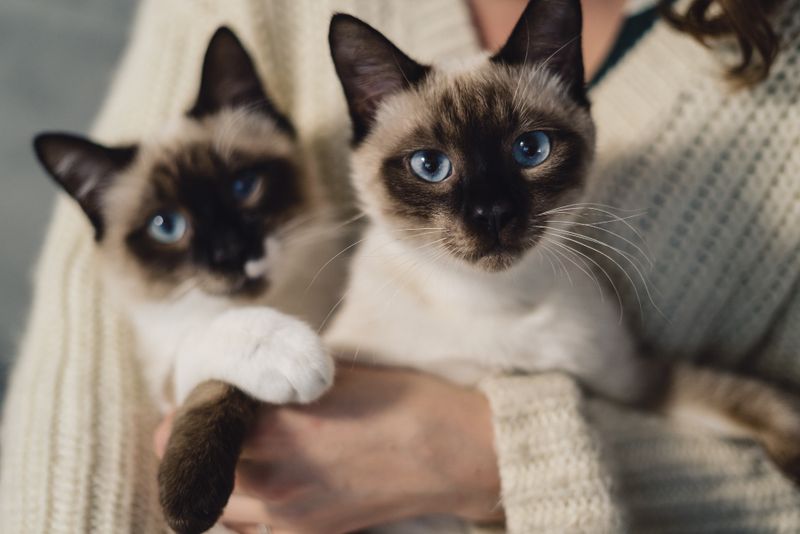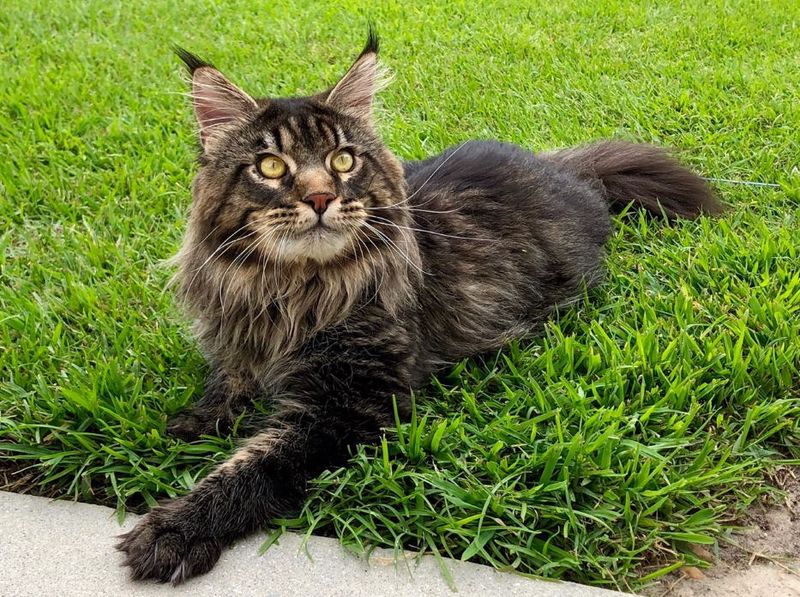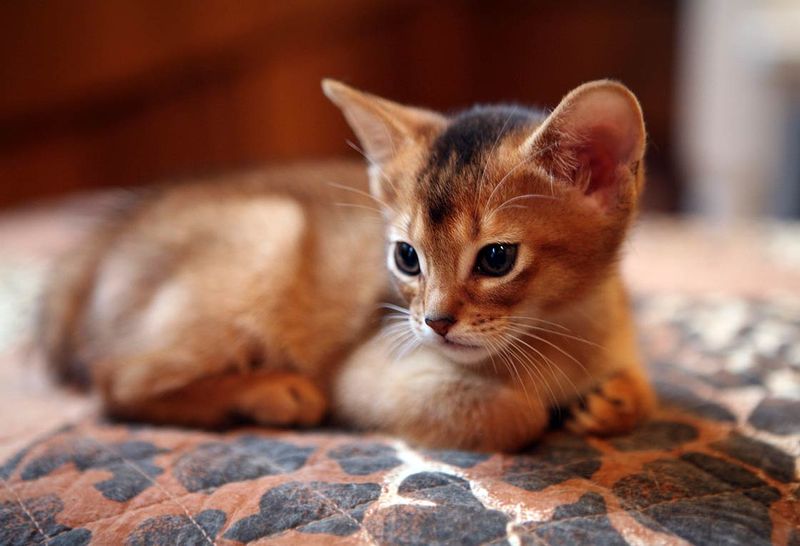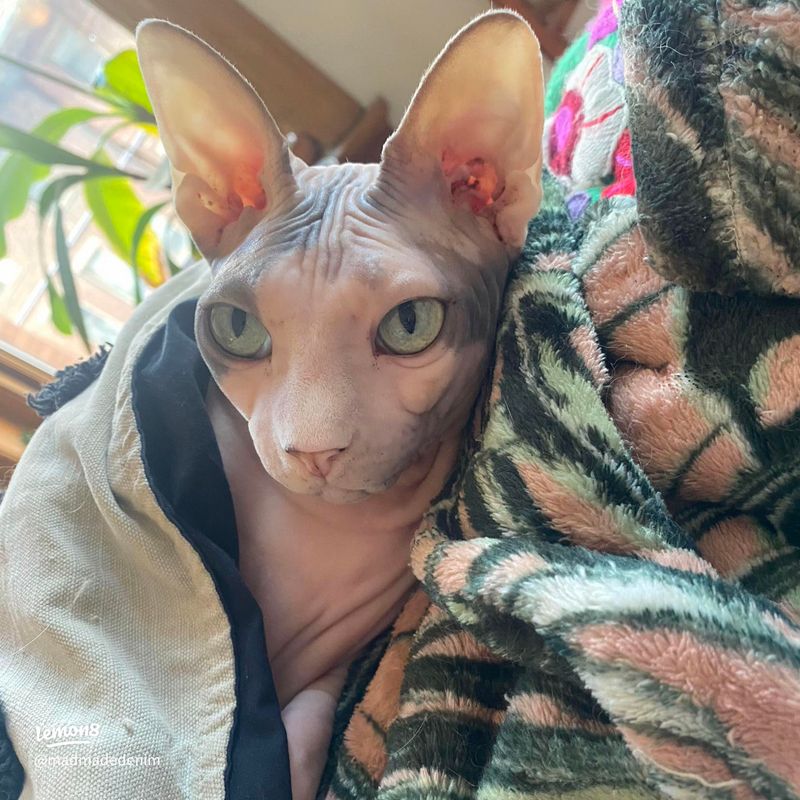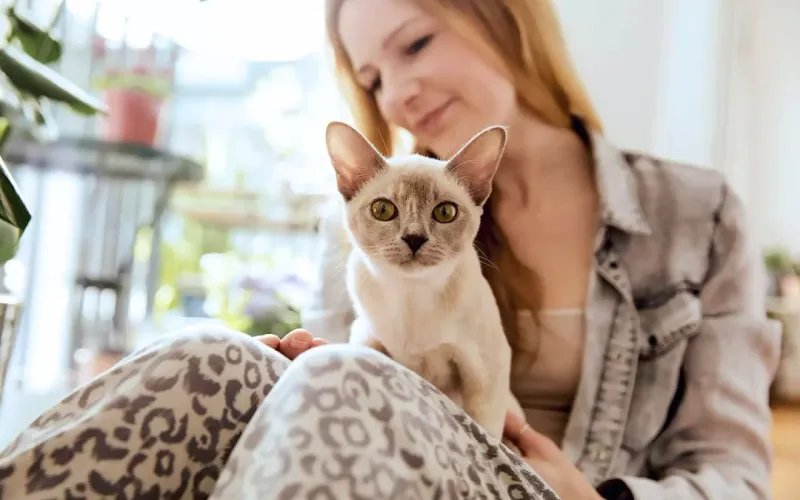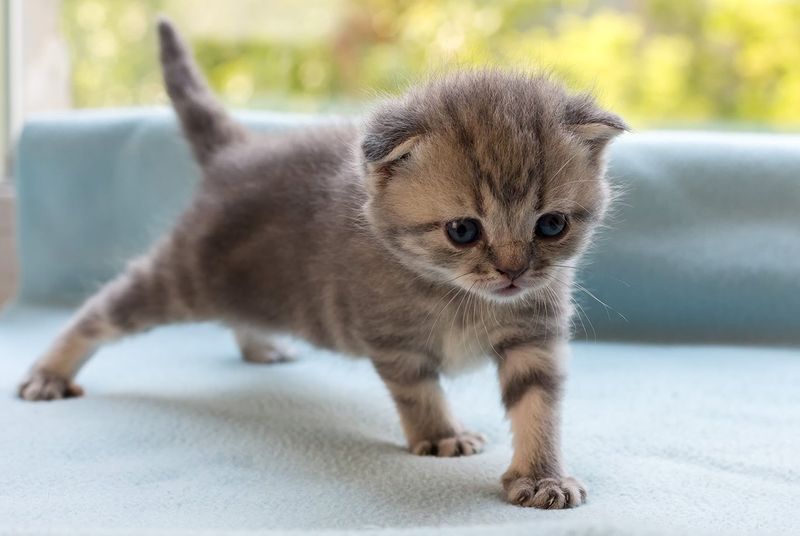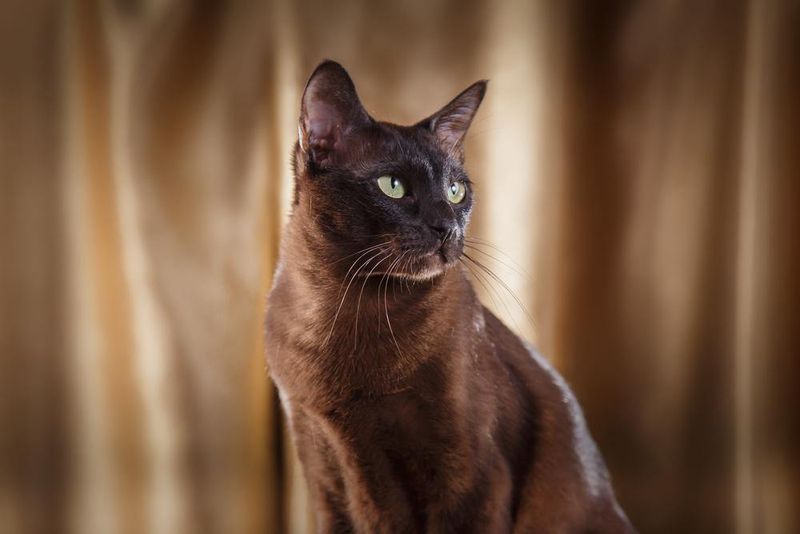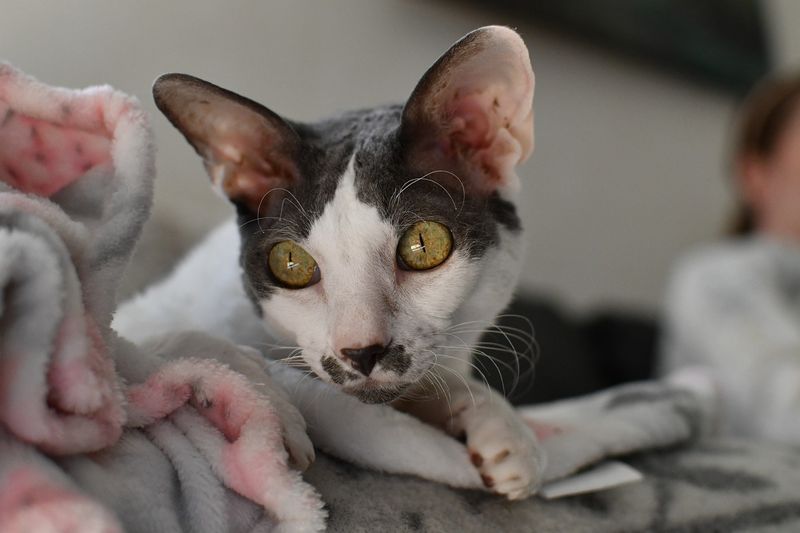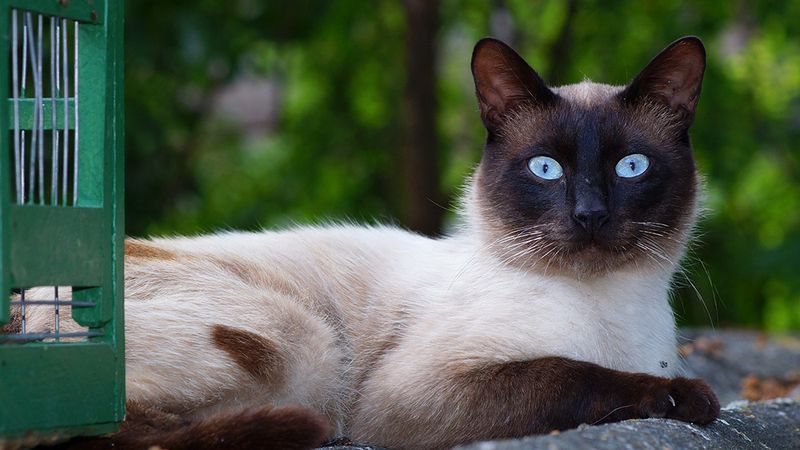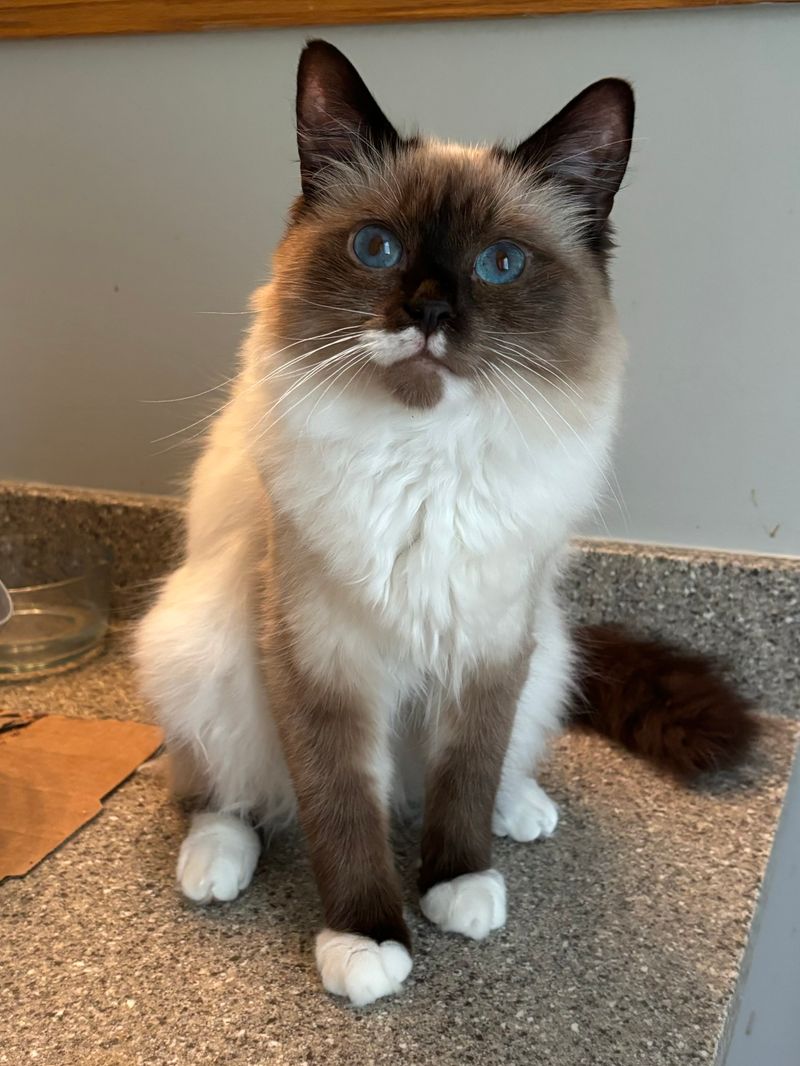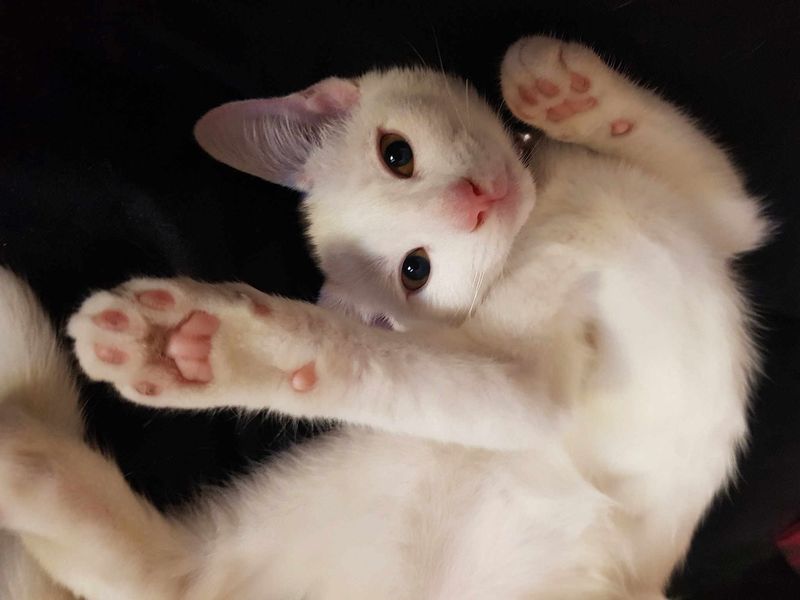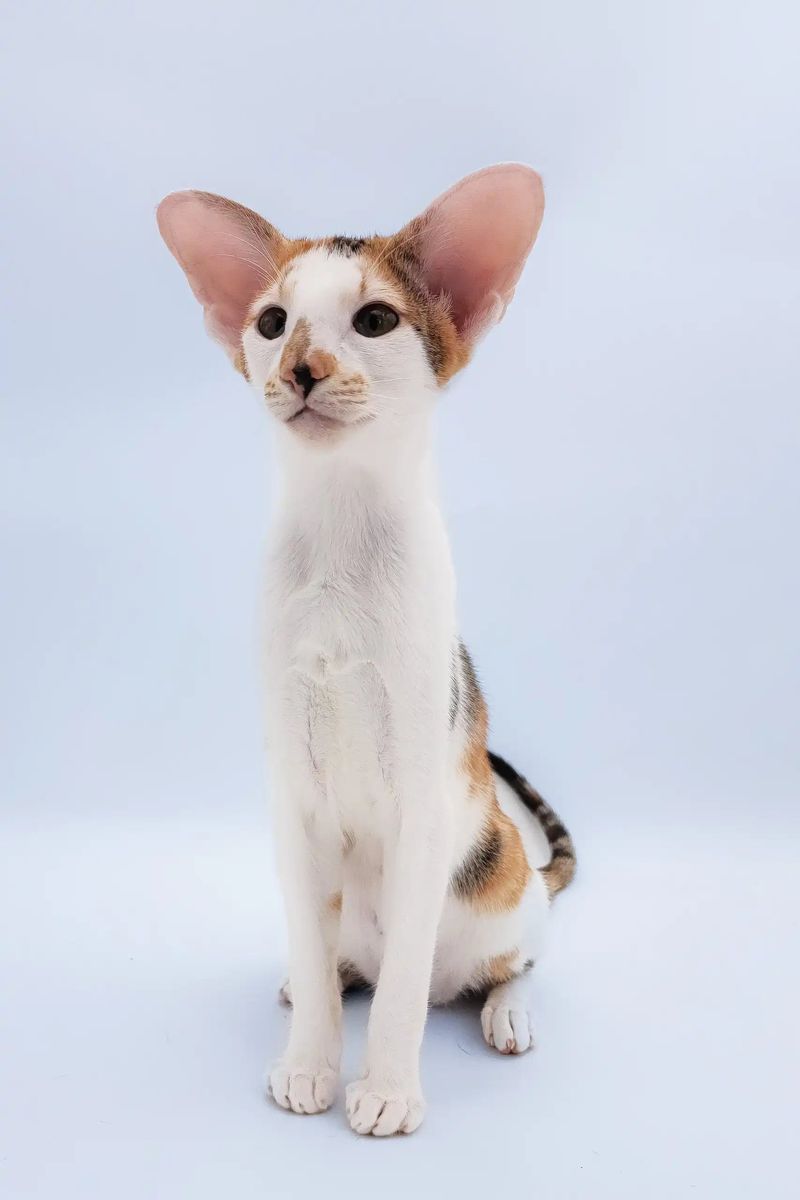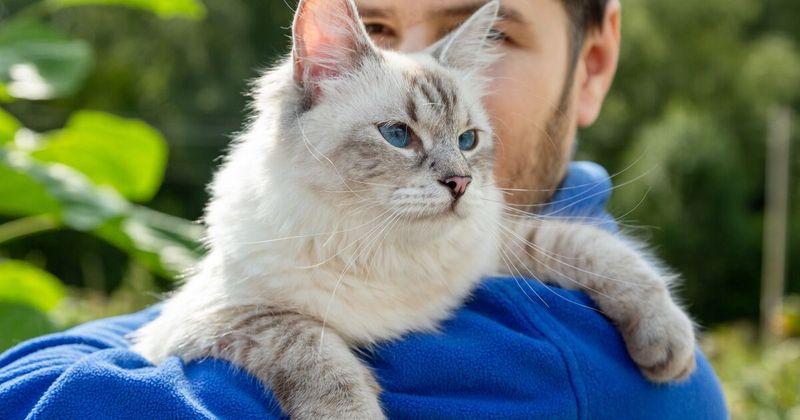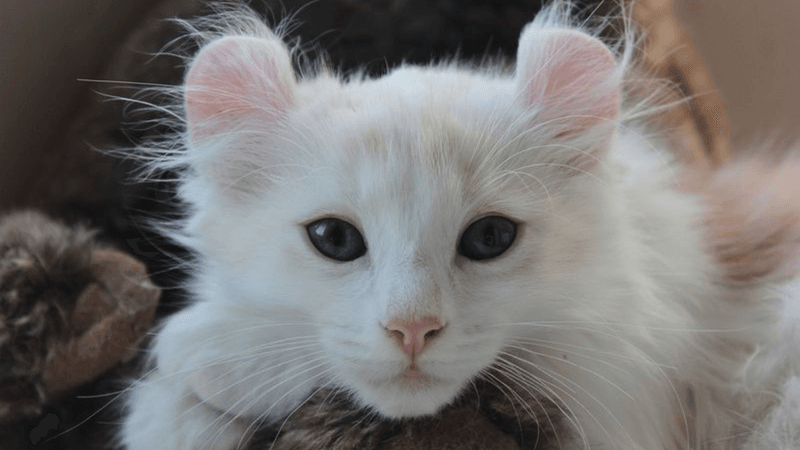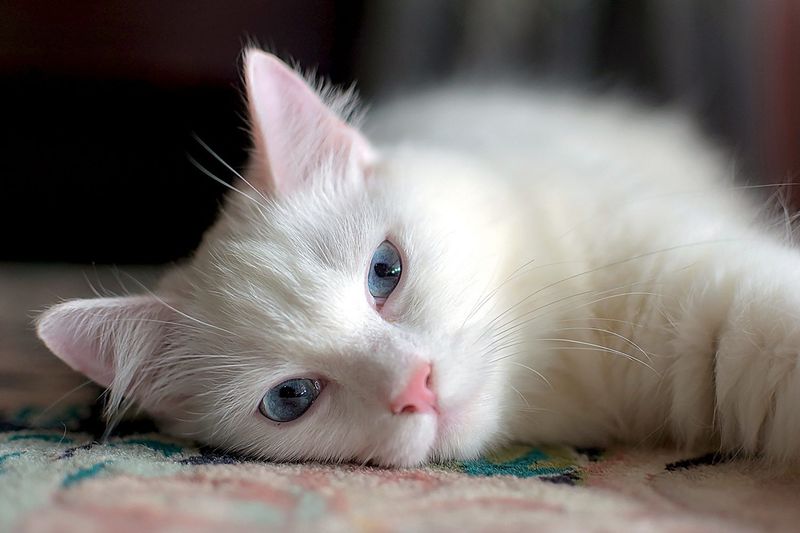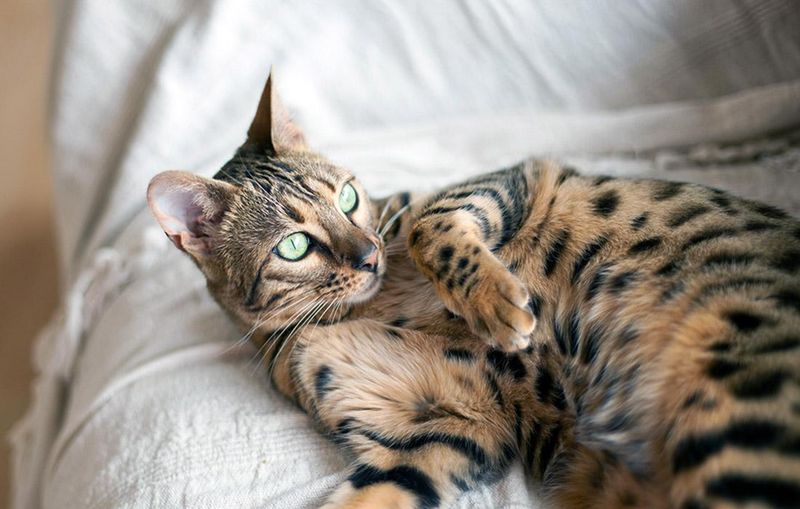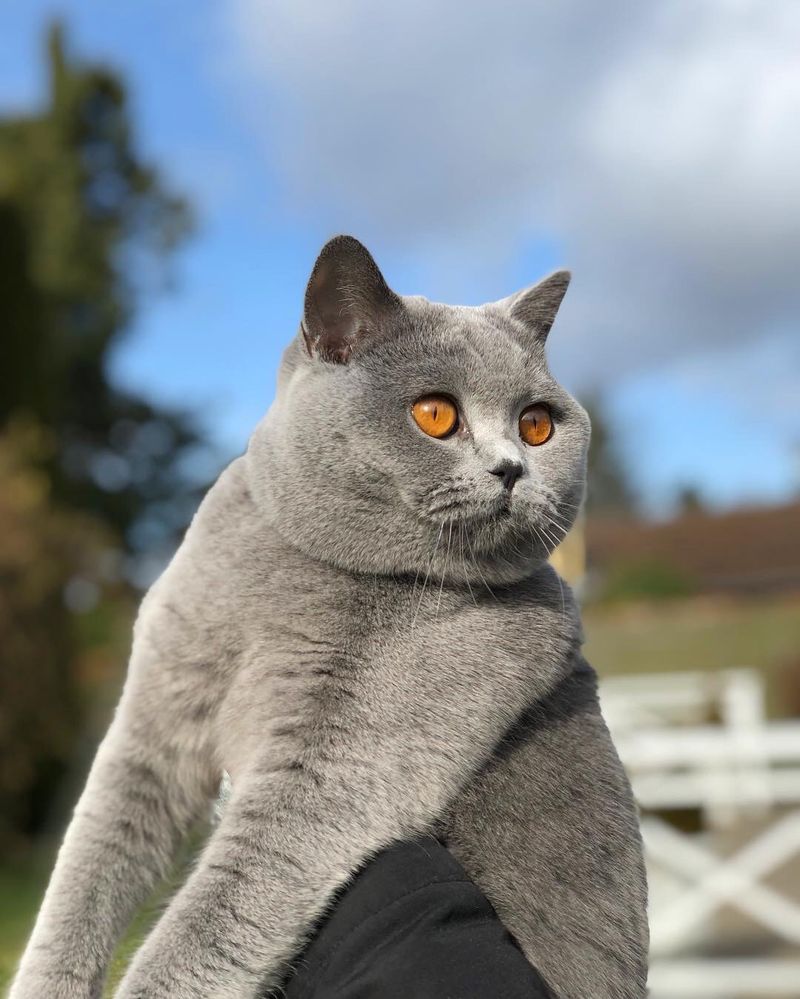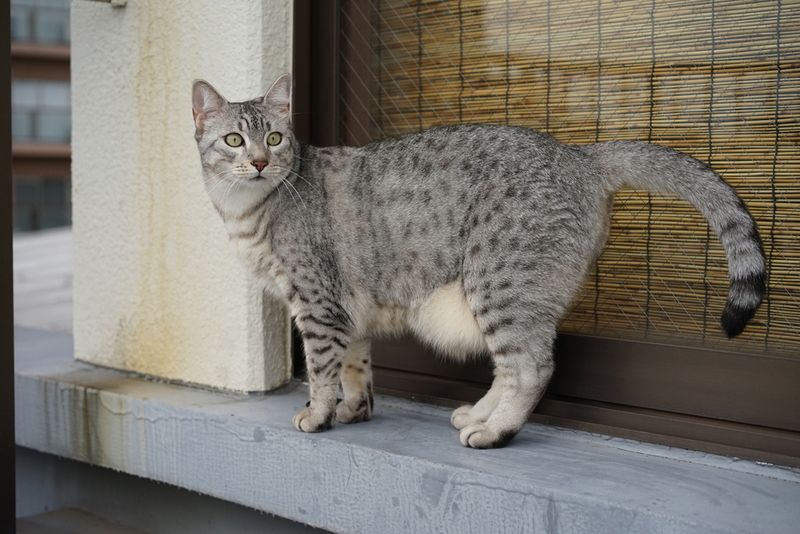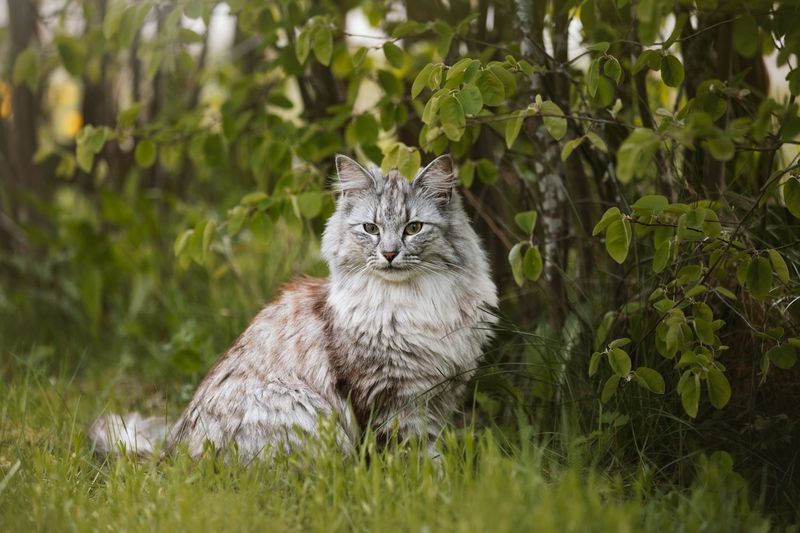📖 Table of Content:
- 1. Siamese
- 2. Ragdoll
- 3. Maine Coon
- 4. Abyssinian
- 5. Sphynx
- 6. Burmese
- 7. Bombay
- 8. Scottish Fold
- 9. Devon Rex
- 10. Tonkinese
- 11. Cornish Rex
- 12. Balinese
- 13. Birman
- 14. Javanese
- 15. Oriental Shorthair
- 16. Nebelung
- 17. Siberian
- 18. American Curl
- 19. Turkish Angora
- 1. Bengal
- 2. British Shorthair
- 3. Singapura
- 4. Egyptian Mau
- 5. Norwegian Forest Cat
Cats are often seen as solitary animals, but their social tendencies vary widely by breed. While independence is common, many cats thrive on companionship and closeness. Some even develop strong emotional attachments to the people they live with.
Certain breeds are known for their affectionate nature, seeking out laps, cuddles, and constant interaction. Others are more reserved, enjoying quiet coexistence without frequent physical contact. Recognizing these differences is key to building a balanced human-cat relationship.
Matching a cat’s personality to a household’s energy and expectations can lead to a more harmonious living environment. Whether looking for a clingy companion or a quiet observer, breed tendencies offer helpful guidance. Knowing what to expect can make choosing the right feline a smoother, more rewarding experience.
1. Siamese
Siamese cats are famous for their vocal personalities and deep attachment to their humans. They’ll follow you from room to room, commenting on your activities with their distinctive meows.
These intelligent felines get lonely easily and often form stronger bonds with one family member over others. Many Siamese owners describe their cats as “dog-like” in their loyalty and need for companionship.
Siamese cats don’t just tolerate affection – they demand it! They’ll happily curl up in your lap for hours, sleep beside you at night, and generally consider themselves an essential part of all household activities.
2. Ragdoll
Pick up a Ragdoll, and chances are it’ll melt right into your arms like a plush toy. That’s actually how the breed got its name. They’re happiest when snuggled up close to their favorite human.
Patient and easygoing, Ragdolls form intense bonds with their families. They greet you at the door, follow you around the house, and prefer to be wherever you are. Unlike some independent felines, they rarely hide or seek solitude.
Children and other pets find perfect companions in these tolerant cats. Their affectionate nature makes them ideal therapy cats, bringing comfort to those in need with their calm, loving presence.
3. Maine Coon
With Maine Coons, you get affection on their—and your—terms. They’re the kind of cats that love being close but won’t invade your space. Most days, they’re content to just follow you like a furry bodyguard.
Despite their massive size, Maine Coons display a tender side, especially with children. They communicate with soft chirps and trills rather than typical meows, creating a special language with their favorite humans.
Family-oriented by nature, these cats don’t demand constant attention but stay nearby, keeping a protective eye on their loved ones. Their balanced personality makes them perfect for families seeking an affectionate yet not overly clingy companion.
4. Abyssinian
Don’t expect long cuddle sessions with an Abyssinian—they show love by staying involved. Whether it’s chasing toys or helping with chores, they want to be where the action is. Bonding happens through doing, not lounging.
Their intelligence shines through problem-solving games and learning tricks. Abyssinians remember who feeds them, plays with them, and provides entertainment, forming special relationships with these family members.
While not typically lap cats, they show affection by staying near you and occasionally brushing against your legs. Their loyalty becomes evident when they choose to sleep beside you at night or perch nearby while you work, maintaining a comfortable but connected distance.
5. Sphynx
Few cats crave closeness like the Sphynx. Their constant search for heat turns into constant cuddling, creating a strong emotional connection in the process. These cats are known for following their humans everywhere—and curling up against them at every chance.
Their outgoing personalities shine through constant interaction with their humans. Sphynx cats actively participate in all household activities – cooking, cleaning, watching TV – they want to be part of everything you do.
Separation anxiety can affect these devoted companions when left alone too long. Their need for connection runs so deep that many Sphynx owners report their cats sleeping under blankets with them and greeting them enthusiastically after even brief absences.
6. Burmese
Burmese cats rank among the most people-oriented felines in the cat world. Their devotion to their humans borders on obsession, with many Burmese following their favorite person everywhere, even to the bathroom!
Social butterflies by nature, these cats thrive on interaction and play. They learn their names quickly and come running when called, a trait uncommon in many other cat breeds. Burmese cats retain their playful kitten-like behavior well into adulthood.
Expect a Burmese to claim prime real estate on your lap whenever you sit down. They’re notorious heat-seekers who love nothing more than curling up on a warm human chest, purring contentedly while maintaining eye contact.
7. Bombay
Don’t let the sleek, panther look fool you—Bombay cats are all heart. They usually pick one person to bond with and stick to them like glue. Behind that fierce exterior is a loyal, loving companion.
Highly social and intelligent, Bombays learn routines quickly and anticipate their owner’s arrival home. They excel at interactive play and can even learn to walk on leashes for outdoor adventures with their favorite humans.
Bombays typically choose one person as their primary attachment figure. While friendly with everyone, they shower special attention on their chosen human, following them devotedly and preferring to sleep beside them at night.
8. Scottish Fold
With those iconic folded ears and sweet, curious looks, Scottish Folds are hard to resist. They don’t demand attention, but they love being around their people. Their soft, steady presence creates a strong emotional connection.
Unlike more vocal breeds, Scottish Folds express their affection through consistent companionship. They excel at finding the perfect balance between independence and attachment, never seeming clingy yet always nearby when you need feline comfort.
Their adaptable nature makes them excellent companions for various households. Scottish Folds bond equally well with single owners or large families, adjusting their affection to match each person’s needs while maintaining their signature calm, loving demeanor.
9. Devon Rex
Devon Rex cats bring pixie-like charm and monkey-level mischief to the households lucky enough to have them. Their oversized ears, wavy coat, and slender bodies house boundless energy and affection for their humans.
These social butterflies thrive on interaction, often perching on shoulders or nestling in the crooks of necks like living scarves. Devon Rex cats form particularly strong bonds with children, matching their playful energy and tolerating the enthusiastic handling that might send other cats running for cover.
Separation anxiety commonly affects this breed when left alone for too long. Their attachment runs so deep that many owners report their Devon Rex greeting them at the door like dogs and sleeping under blankets with them at night.
10. Tonkinese
With roots in both Siamese and Burmese cats, Tonkinese combine cleverness and a playful spirit. Their medium, muscular build is matched by their deep devotion to their humans. These cats thrive on forming strong, lasting bonds.
Social butterflies by nature, Tonkinese cats hate being alone and will actively seek out human companionship. They excel at interactive games and can learn tricks that showcase their intelligence while strengthening their bond with you.
Expect a Tonkinese to claim your lap whenever you sit down. They’re notorious conversation partners who will chirp, trill, and meow in response to your voice, creating a special language between you that strengthens your unique connection.
11. Cornish Rex
Known for their lively spirit, Cornish Rex cats bond through playful engagement and a search for warmth. Their unique curly coats offer less insulation, prompting them to cuddle more often. This affectionate nature makes them eager companions.
Active and athletic well into old age, these cats form connections through interactive play. Their remarkable jumping ability and love for fetch games create opportunities for bonding that more sedentary cats might miss.
Cornish Rex cats remember who provides their favorite activities and treats, forming special attachments to these family members. Their sociable nature means they rarely hide away from company, preferring to be in the middle of family gatherings, greeting visitors, and participating in all household activities.
12. Balinese
Combining chatty personalities with cuddly devotion, Balinese cats are affectionate companions. Their sleek, medium-length fur is low maintenance, but their social needs are high. Regular interaction keeps these cats happy and connected.
Highly intelligent and sensitive, Balinese cats tune into their owner’s emotions with uncanny accuracy. Many owners report their Balinese providing extra cuddles during times of stress or illness, showcasing their intuitive understanding of human feelings.
Expect enthusiastic greetings when you return home, even after short absences. Balinese cats form such strong attachments that they often follow their owners from room to room, offering running commentary in their distinctive melodious voices.
13. Birman
Renowned for their serene presence, Birmans offer gentle affection and steady companionship. Their striking color-pointed coats and white “gloves” add to their graceful charm. These cats create strong, calm bonds without demanding constant attention.
Unlike more vocal breeds, Birmans express their devotion through consistent presence and soft purrs. They excel at sensing when you need companionship, appearing beside you during difficult moments as if guided by an internal compass for human emotions.
Children find perfect companions in these patient cats. Birmans tolerate being dressed up or pushed in doll carriages with remarkable grace, earning them the nickname “Sacred Cats of Burma” not just for their legendary temple origins but for their seemingly divine patience.
14. Javanese
Combining smarts and sensitivity, Javanese cats form lasting bonds with their humans. Their graceful bodies and smooth coats complement their affectionate nature. Mental stimulation and cuddles keep these cats truly connected.
Puzzle toys and interactive games strengthen their connection to owners. Javanese cats remember who engages their active minds, forming special relationships with family members who participate in their play sessions and training activities.
Their communicative nature shows in melodious conversations with their favorite humans. Javanese cats develop a special language of chirps, trills, and meows that they use primarily with those they feel closest to, creating a unique bond through this feline-human dialogue that grows more complex and intimate over time.
15. Oriental Shorthair
Oriental Shorthairs form intense emotional attachments to their chosen humans. These sleek, elegant cats with almond-shaped eyes and large ears don’t just live with you – they make you the center of their universe.
Separation anxiety commonly affects this breed when left alone for too long. Their need for connection runs so deep that many Oriental owners report their cats developing depression-like symptoms when their favorite person is absent for extended periods.
Expect a vocal, engaged companion who participates in all your activities. Oriental Shorthairs learn routines quickly and anticipate their humans’ behaviors, often appearing before you even realize you were about to sit down or prepare food.
16. Nebelung
Marked by quiet devotion, Nebelungs connect intensely with those they trust. These elegant cats, with their shimmering silver-blue coats, tend to be reserved but deeply loving. Their medium-long fur adds to their graceful presence.
Routine and consistency strengthen their connection. Nebelungs remember who feeds them, plays with them, and respects their occasional need for space, forming special relationships with these understanding humans.
Their quiet affection shows in subtle ways – sitting nearby rather than on laps, gentle head-butts rather than demanding meows. Many Nebelung owners report their cats developing a special bedtime routine, appearing precisely when their favorite human prepares for sleep, creating a reliable ritual that deepens their unique bond.
17. Siberian
Hailing from the Russian forests, Siberians carry a natural warmth into their relationships. Their sturdy, triple-layered coats match their affectionate and playful personalities.
Family-oriented by nature, Siberians distribute their love generously among household members. They particularly excel with children, showing remarkable patience and gentleness despite their powerful physique.
Water fascination sets this breed apart – many Siberian owners report their cats joining them in the bathroom, pawing at shower curtains or even hopping into nearly-empty tubs. This unusual trait creates unique bonding opportunities, as these cats often form special connections with family members who indulge their water play with dripping faucets or shallow water dishes.
18. American Curl
American Curls stand out with their distinctive backward-curling ears and their exceptionally people-oriented personalities. These playful, adaptable cats maintain kitten-like behavior well into adulthood, creating lasting bonds through interactive play.
Greeting rituals matter deeply to this breed. American Curls often develop special welcoming behaviors for their favorite humans, running to the door when they hear familiar footsteps or cars in the driveway.
Their affectionate nature shows in gentle head-butts and shoulder perching. Many American Curl owners report their cats developing a special “language” of chirps and trills used exclusively with their favorite people, creating a private communication system that strengthens their unique bond.
19. Turkish Angora
Combining elegance with a selective heart, Turkish Angoras form devoted bonds with chosen individuals. Their smooth, silky coats enhance their graceful presence. They tend to focus affection on one family member, showing a quiet but strong loyalty.
Swimming sets this ancient breed apart from typical water-averse cats. Many Turkish Angora owners report their cats joining them in the bathroom or even attempting to enter showers, creating unique bonding opportunities through this unusual shared activity.
Their intelligence shows in problem-solving abilities and trick learning. Turkish Angoras remember who engages their active minds with games and training, forming deeper connections with these mentally stimulating companions while maintaining friendly but more casual relationships with other household members.
1. Bengal
Bengals approach relationships with wild enthusiasm but maintain emotional independence. These spotted or marbled active cats, descended from Asian leopard cats, form bonds through shared activities rather than cuddle sessions.
Water play creates unique bonding opportunities with this unusual breed. Many Bengal owners report their cats joining them in the shower or playing in sinks, making bathroom time a special shared activity that strengthens their connection.
Their high energy requires interactive play for proper bonding. Bengals remember who provides challenging games and climbing opportunities, forming stronger attachments to these engaging humans while maintaining a friendly but more casual relationship with less interactive family members.
2. British Shorthair
Displaying a gentle self-reliance, British Shorthairs connect deeply but on their own terms. Their plush, dense fur adds to their dignified appearance. They prefer to show affection by quietly staying close instead of seeking attention.
Physical boundaries matter to this dignified breed. British Shorthairs typically prefer sitting beside you to sitting on you, showing their connection through proximity rather than constant contact. Their reserved nature extends to being picked up – most prefer all four paws on solid ground.
Their quiet loyalty becomes evident in bedtime routines. Many British Shorthair owners report their cats faithfully sleeping at the foot of the bed night after night, maintaining a comfortable distance while still participating in this intimate daily ritual.
3. Singapura
Despite their petite size, Singapuras bring big personalities and strong devotion to their humans. Their small, ticked coats belie the intense bonds they form. Often, their affection centers on one very special person.
Despite their delicate appearance, Singapuras remain playful and kitten-like throughout their lives. They form connections through interactive games and shared activities, remembering who provides their favorite toys and playtimes.
Warmth-seeking behaviors strengthen their human bonds. Many Singapura owners report their cats burrowing under blankets with them or curling against their necks at night, creating intimate sleeping arrangements that satisfy both the cat’s desire for warmth and the human’s need for close companionship.
4. Egyptian Mau
Egyptian Maus maintain an air of mystery while forming selective, intense bonds. These spotted, athletic cats descended from ancient Egyptian felines connect deeply with their chosen humans while maintaining a sense of independence.
Speed and agility define their playful interactions. Egyptian Maus form stronger attachments to family members who engage them in active play, providing outlets for their remarkable running abilities – they’re the fastest domestic cats, capable of running up to 30 mph.
Their loyalty shows in protective behaviors. Many Egyptian Mau owners report their cats developing guardian-like attitudes toward their favorite humans, staying close during illness and even checking on sleeping children, behaviors that reflect their ancient heritage as revered protectors in Egyptian households.
5. Norwegian Forest Cat
Known for their quiet confidence, Norwegian Forest Cats balance emotional independence with loyal companionship. Their large, semi-long coats add to their majestic appearance. These cats express affection by simply being nearby, not through constant demands.
Climbing creates special bonding opportunities with this tree-loving breed. Many Norwegian Forest Cat owners report their cats perching near them at shoulder or head height, maintaining eye-level contact from bookshelves or cat trees rather than demanding lap time.
Seasonal changes affect their bonding style. During colder months, these historically cold-weather cats often become more physically affectionate, seeking shared warmth that creates natural opportunities for closer connection while maintaining their dignified independence during warmer seasons.

